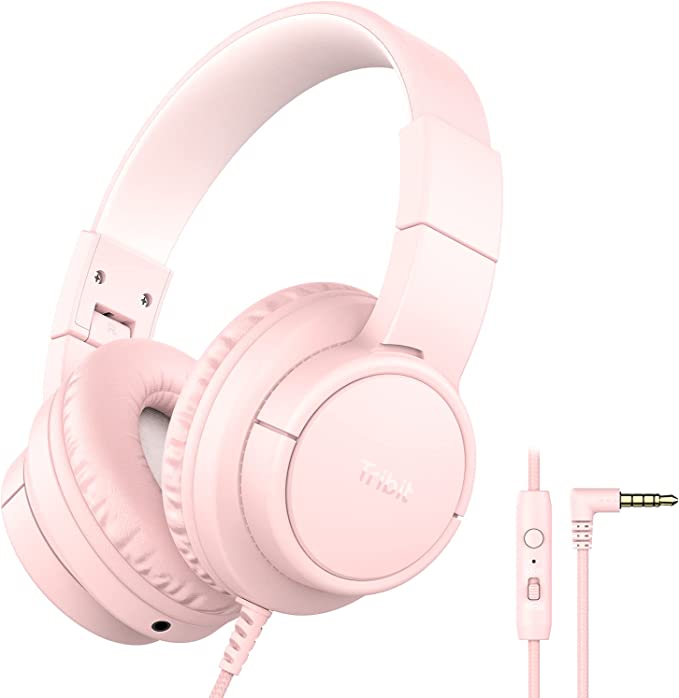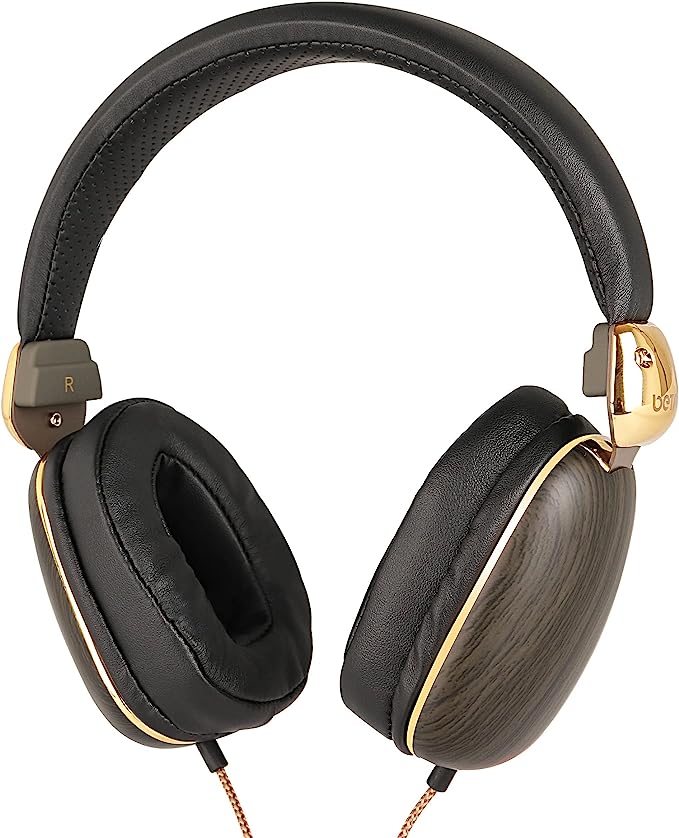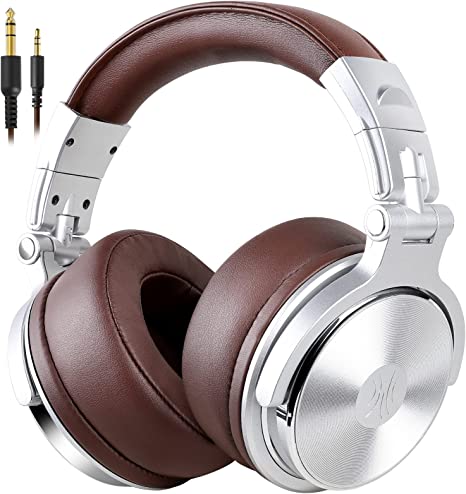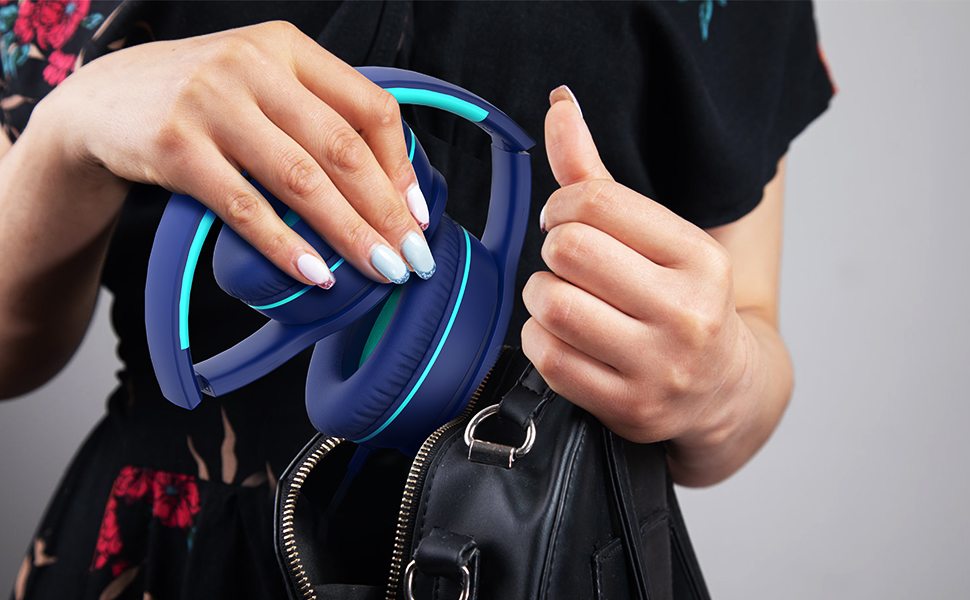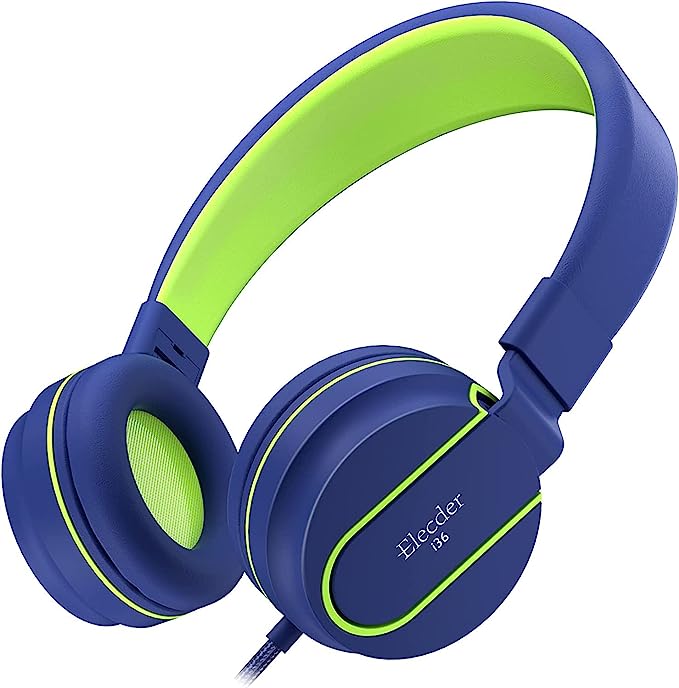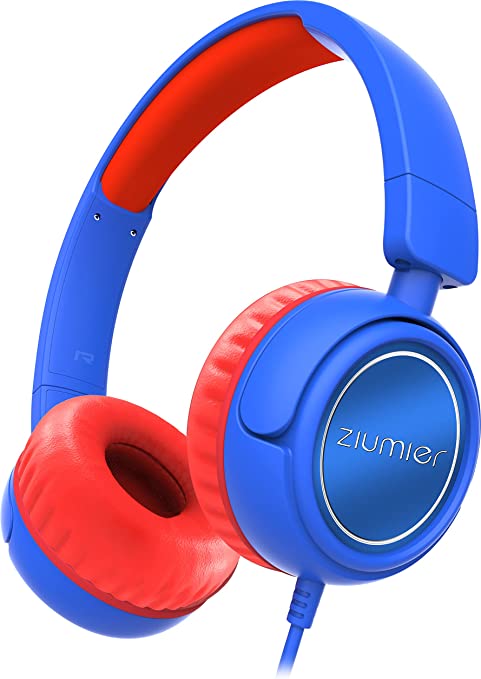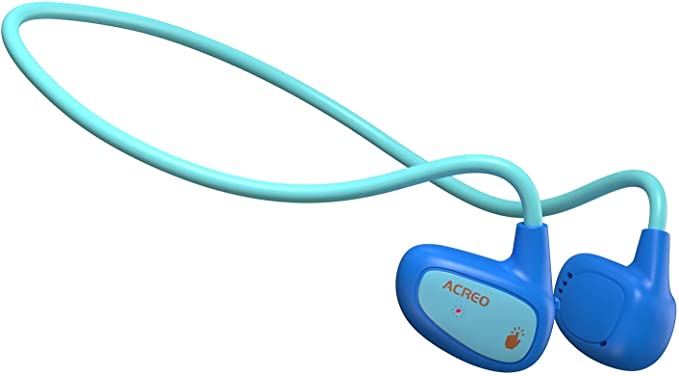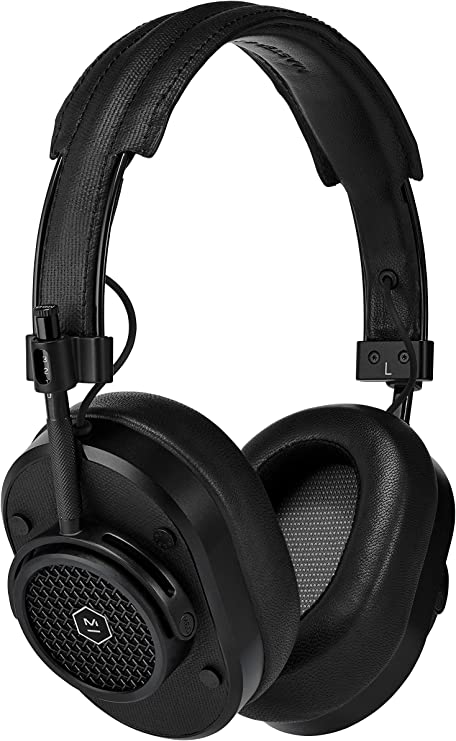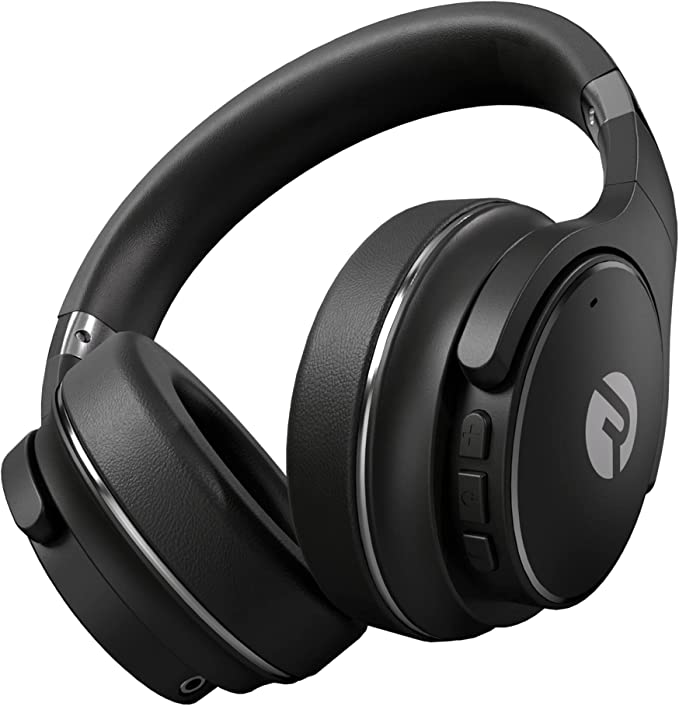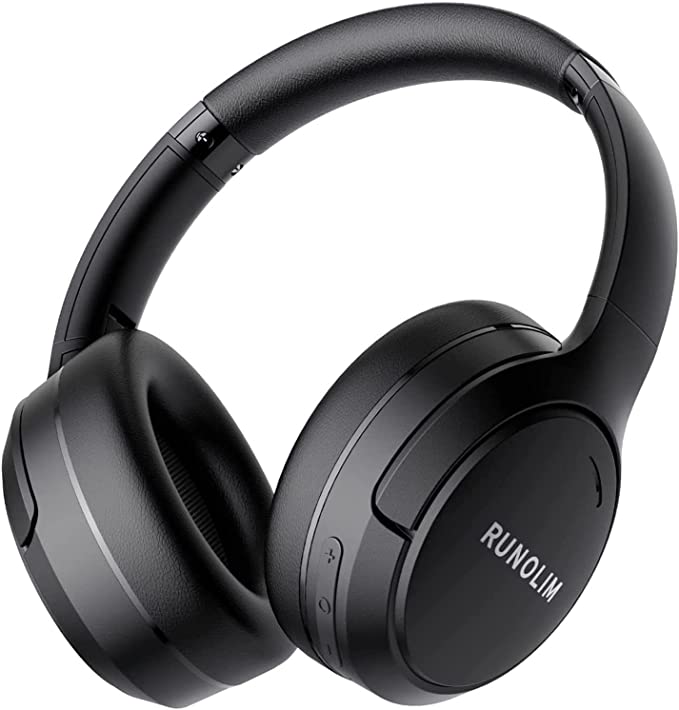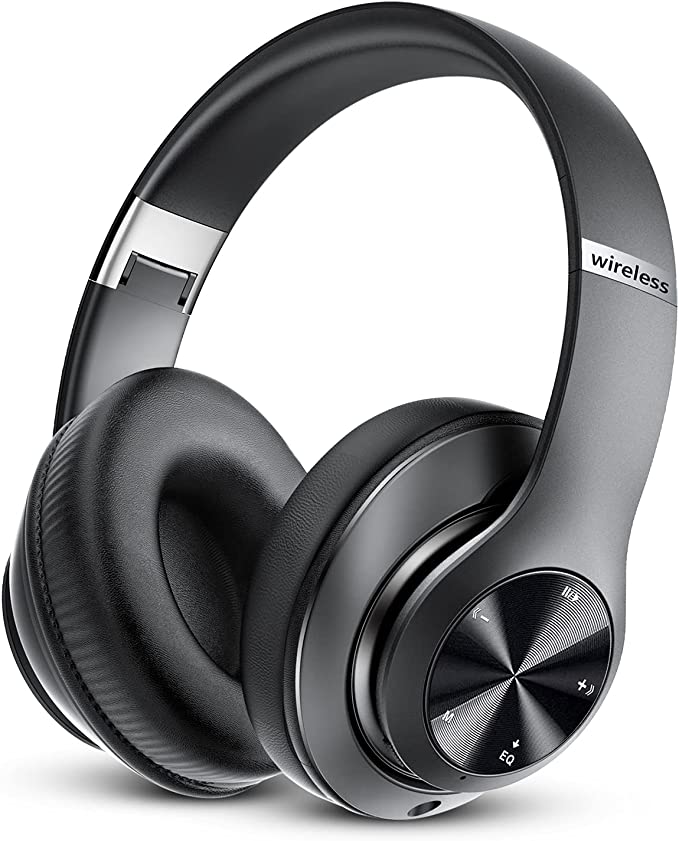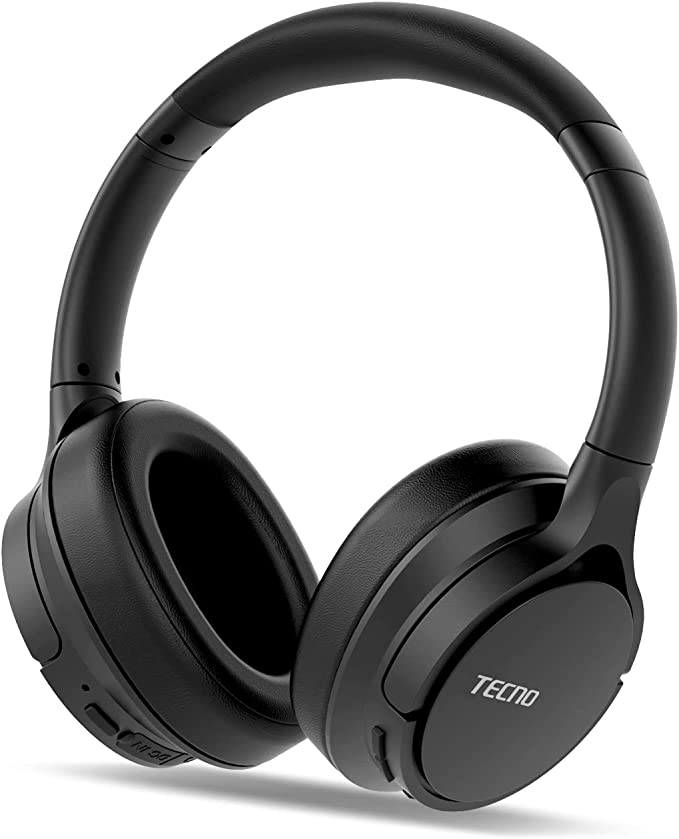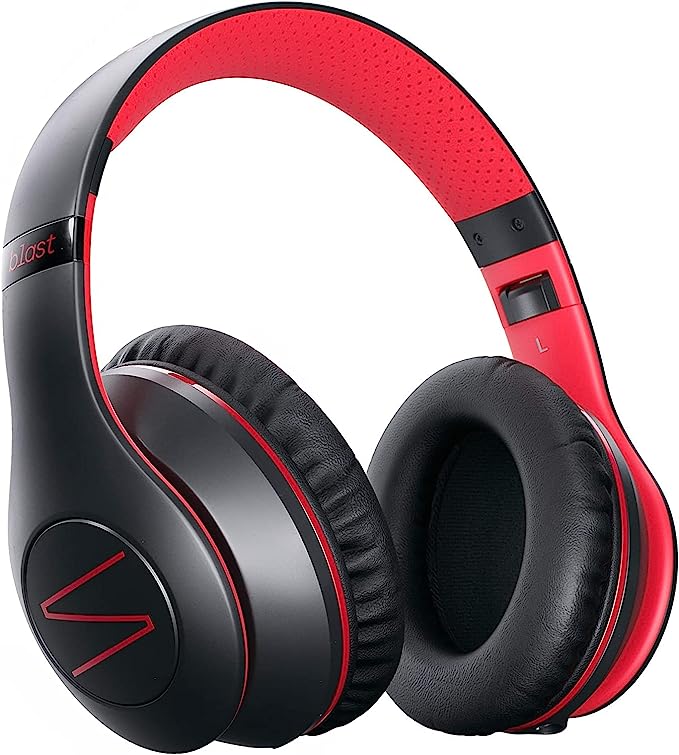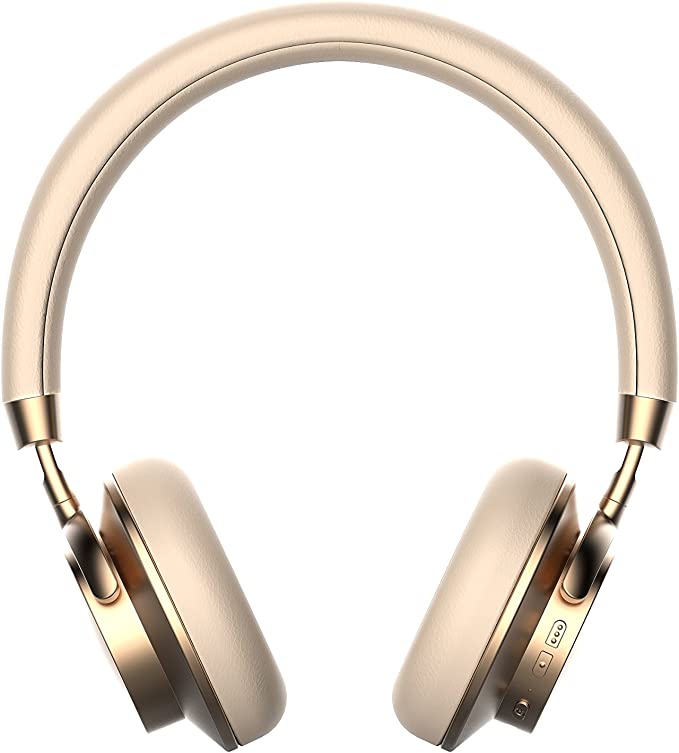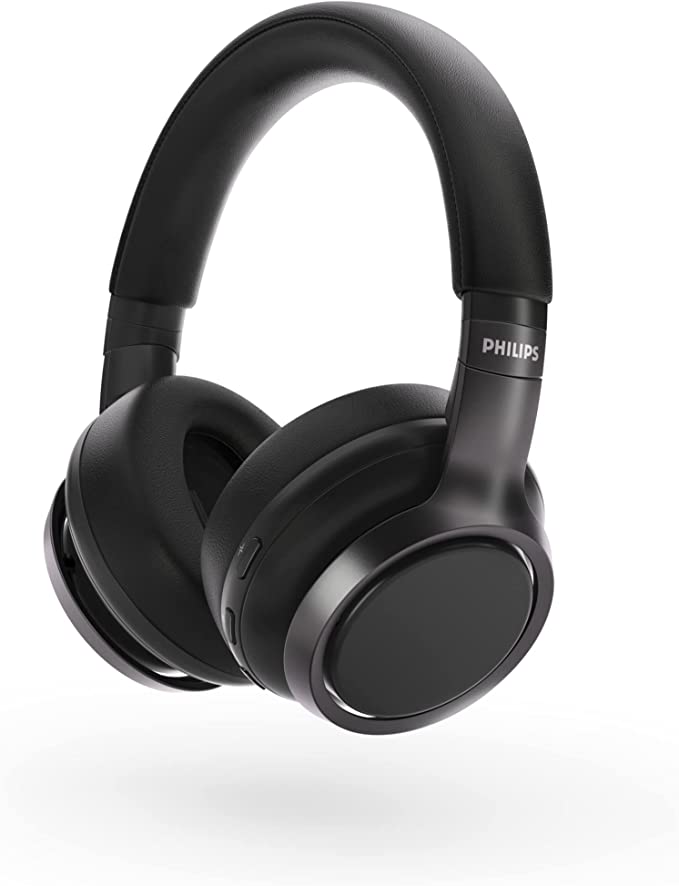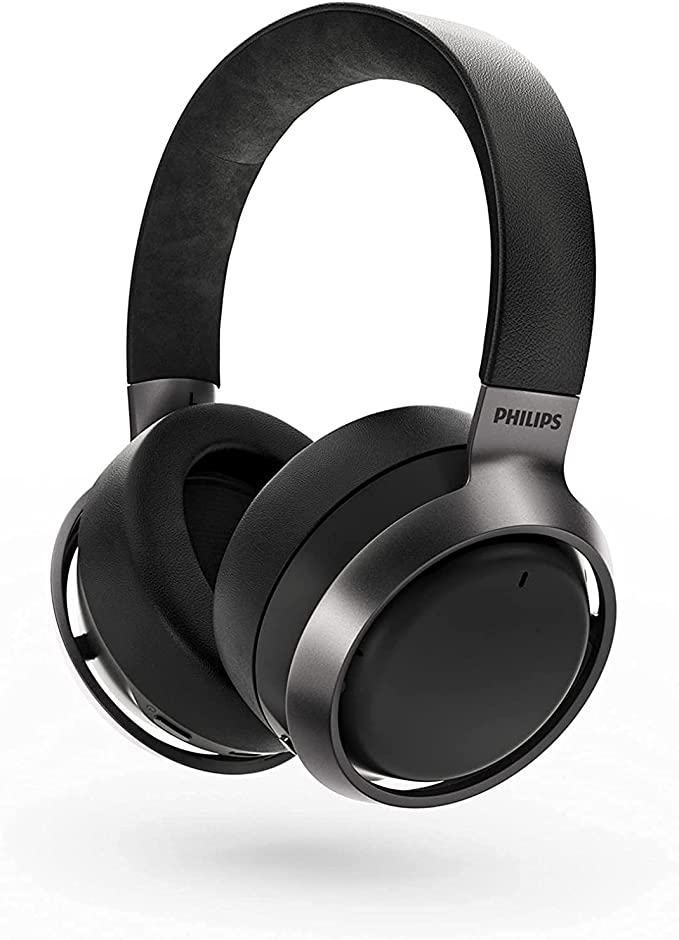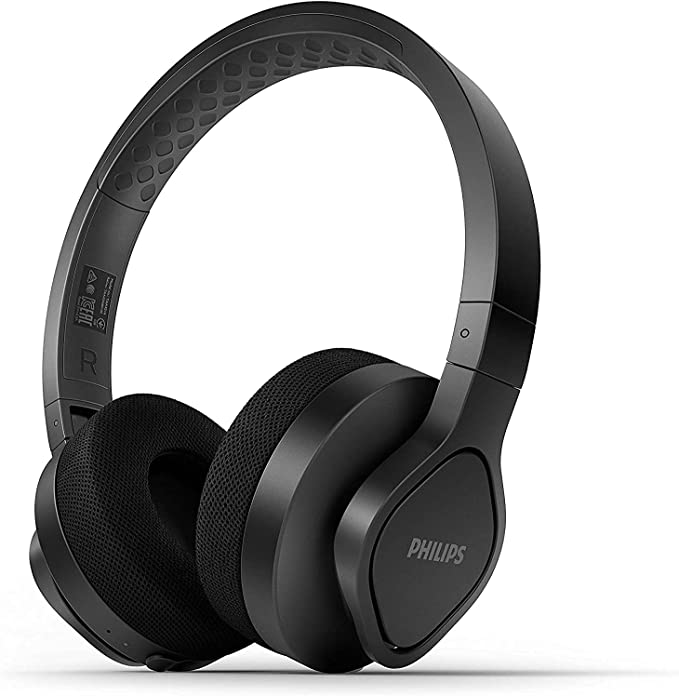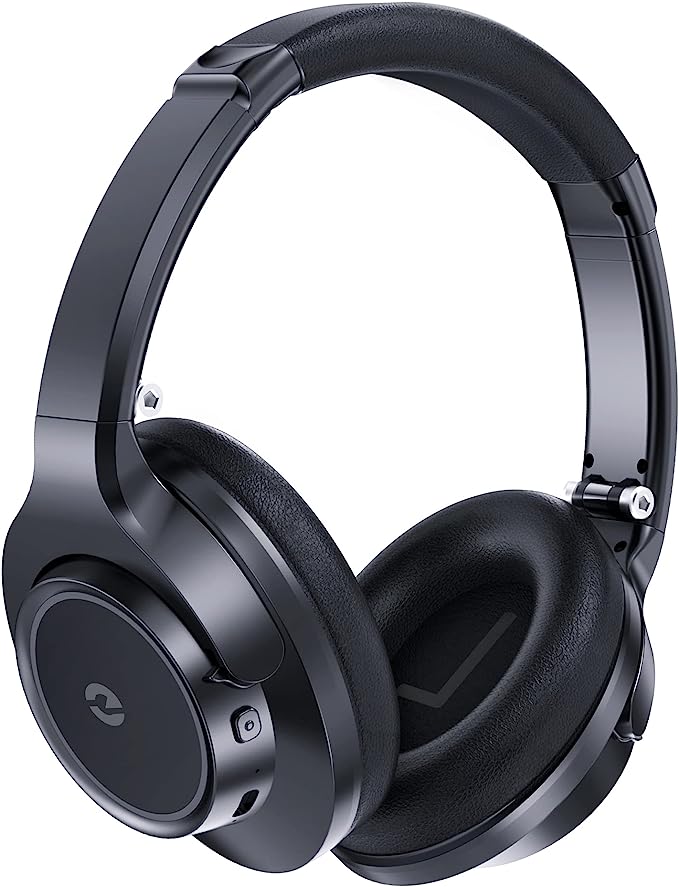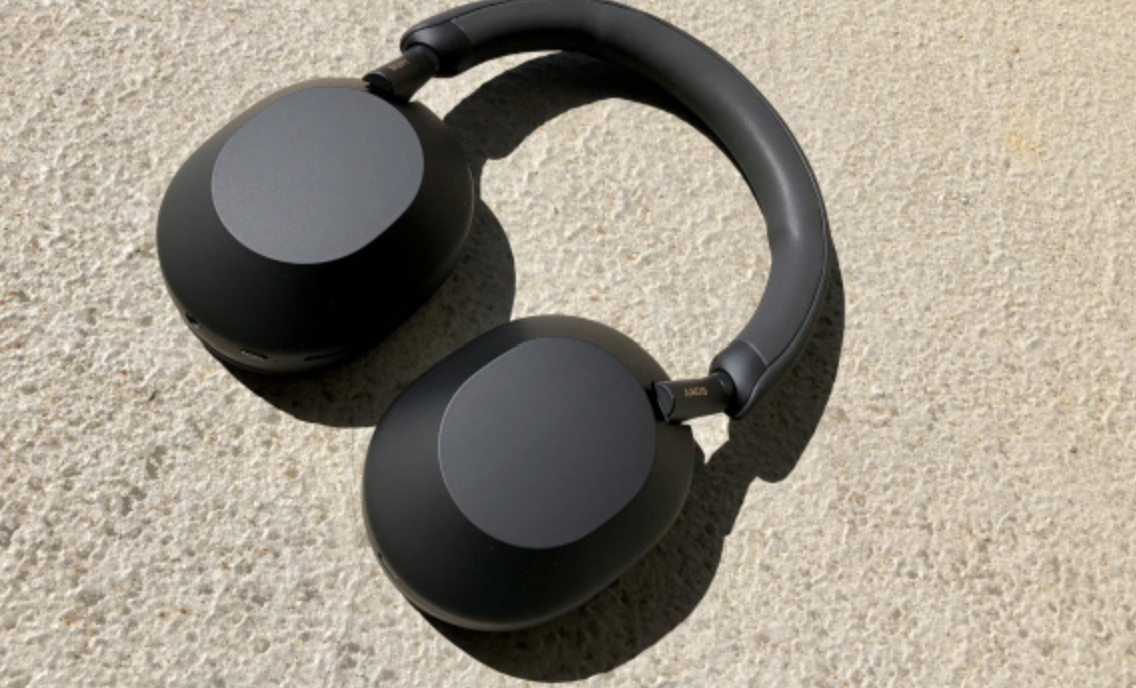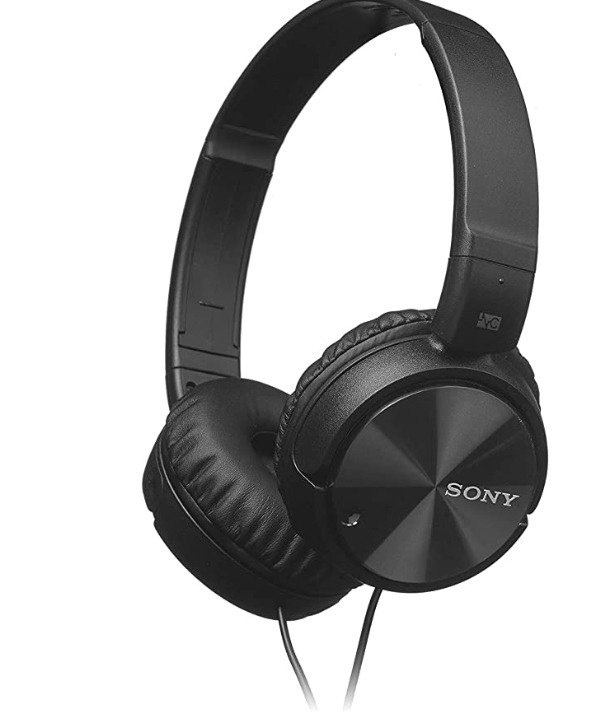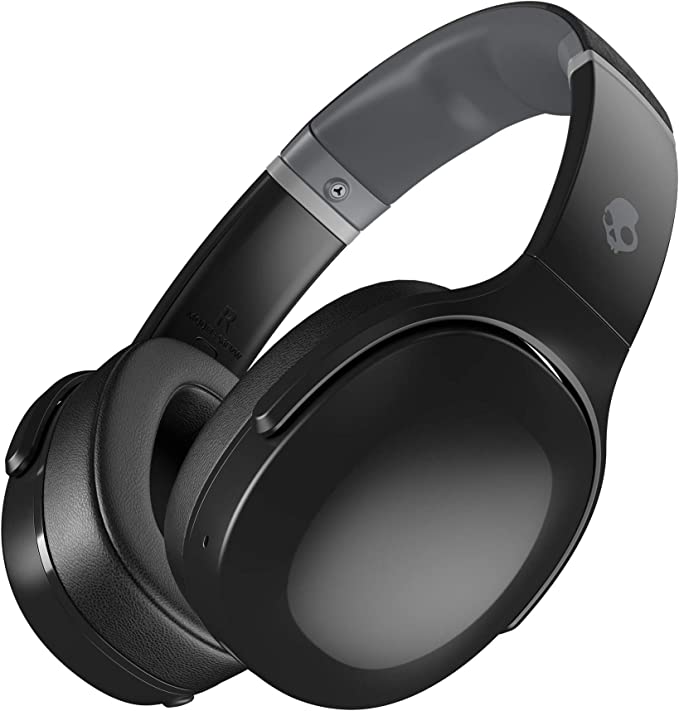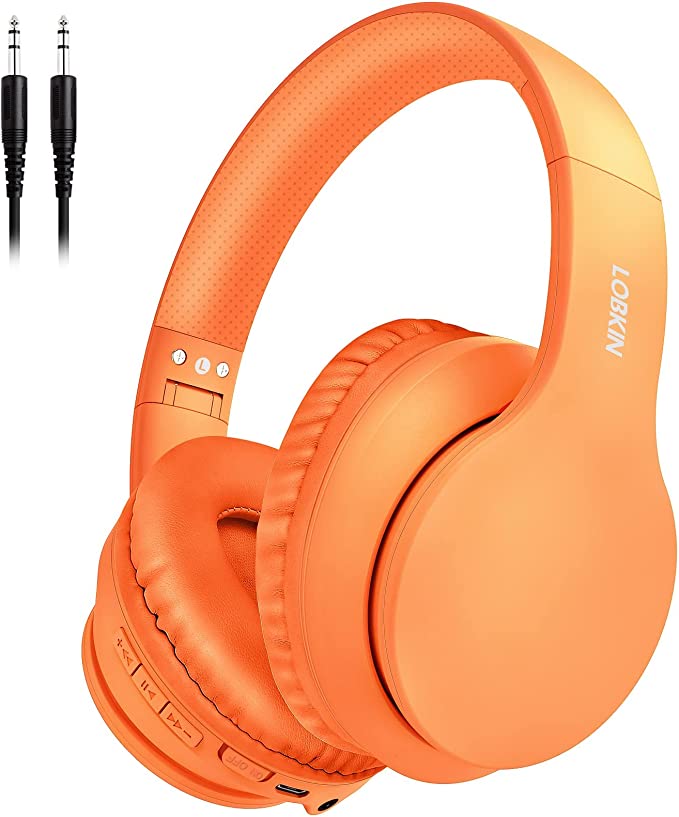ELECDER i37 Kids Headphones - Safe and Comfortable Sound for Growing Ears
Update on March 21, 2025, 10:59 a.m.
Imagine a typical scene: a child, eyes glued to a tablet, completely absorbed in a game or a video. Headphones are on, effectively sealing them off from the surrounding world. This is the reality for millions of children today, a generation immersed in a digital soundscape from a very young age. While technology offers incredible opportunities for learning and entertainment, it also presents a hidden danger: the potential for noise-induced hearing loss.
The Alarming Statistics
The World Health Organization (WHO) paints a stark picture. They estimate that over 1 billion young people worldwide are at risk of preventable hearing loss due to unsafe listening practices. This isn’t some distant threat; it’s a growing epidemic, fueled by the increasing use of personal listening devices like headphones and earbuds. In the United States, the CDC estimates that 12.5% of children and adolescents aged 6–19 years have suffered permanent damage to their hearing from excessive noise exposure. These numbers are a wake-up call, urging us to understand the science of sound and take proactive steps to protect our children’s precious hearing.

Sound: The Invisible Wave
To understand the risks, we must first understand sound itself. Sound is, fundamentally, a vibration that travels through a medium, like air. These vibrations are characterized by two key properties: frequency and amplitude.
-
Frequency: Measured in Hertz (Hz), frequency determines the pitch of a sound. A high-frequency sound, like a bird’s chirp, has many vibrations per second. A low-frequency sound, like a bass drum, has fewer vibrations per second. Humans can typically hear sounds ranging from 20 Hz to 20,000 Hz, although this range can decrease with age and noise exposure.
-
Amplitude: Amplitude relates to the intensity or loudness of a sound. It’s measured in decibels (dB), a logarithmic scale. This means that a 10 dB increase represents a tenfold increase in sound intensity. For example, a sound at 70 dB is ten times more intense than a sound at 60 dB, and a sound at 80 dB is 100 times more intense than a sound at 60dB. This logarithmic scale is crucial to understanding the potential for damage.
Think of it like this: imagine dropping a pebble into a still pond. The ripples represent sound waves. A small pebble (low amplitude) creates small ripples. A large boulder (high amplitude) creates massive waves. Similarly, high-amplitude sound waves carry much more energy and can cause significantly more damage to the delicate structures of the ear.

The Ear: A Delicate Instrument
The human ear is a marvel of biological engineering, capable of detecting an astonishing range of sounds. It’s divided into three main parts: the outer ear, middle ear, and inner ear.
-
Outer Ear: This is the visible part of the ear (the pinna) and the ear canal. It collects sound waves and funnels them towards the eardrum.
-
Middle Ear: The eardrum (tympanic membrane) vibrates when sound waves hit it. These vibrations are then amplified by three tiny bones: the malleus (hammer), incus (anvil), and stapes (stirrup).
-
Inner Ear: The stapes transmits the vibrations to the cochlea, a fluid-filled, snail-shaped structure. Inside the cochlea are thousands of tiny hair cells, the true sensory receptors of hearing. These hair cells are arranged according to the frequencies they detect, like keys on a piano. When the fluid in the cochlea vibrates, the hair cells bend, triggering electrical signals that travel along the auditory nerve to the brain, where they are interpreted as sound.
The problem is that these hair cells are incredibly delicate. Exposure to excessively loud sounds can damage or even destroy them. And unlike many other cells in the body, hair cells do not regenerate. Once they’re gone, they’re gone, leading to permanent hearing loss.

Noise-Induced Hearing Loss: A Preventable Tragedy
Noise-induced hearing loss (NIHL) is, as the name suggests, hearing loss caused by exposure to loud noise. It can be caused by a single, extremely loud event (like an explosion) or, more commonly, by repeated or prolonged exposure to sounds above safe levels.
What are those “safe levels”? This is where the concepts of 8-hour time-weighted average (TWA) and exchange rate come in. The TWA is the average sound level a person can be exposed to over an 8-hour period without risking hearing damage. The exchange rate describes how the permissible exposure time decreases as the sound level increases.
The National Institute for Occupational Safety and Health (NIOSH) recommends an 8-hour TWA of 85 dBA (A-weighted decibels, a scale that reflects the sensitivity of the human ear) with a 3-dB exchange rate. This means that for every 3 dB increase in sound level, the permissible exposure time is halved. So, while 8 hours at 85 dBA is considered safe, only 4 hours at 88 dBA, 2 hours at 91 dBA, and so on, are allowed.
The Occupational Safety and Health Administration (OSHA) uses a less protective standard: an 8-hour TWA of 90 dBA with a 5-dB exchange rate.
These standards are primarily designed for workplace environments, but they provide a valuable framework for understanding safe listening levels in general. For children, whose ears are even more vulnerable, it’s generally recommended to err on the side of caution and aim for lower sound levels and shorter exposure times.

Headphones: A Double-Edged Sword
Headphones, while convenient and often necessary for modern life, can significantly increase the risk of NIHL. They deliver sound directly to the ear canal, bypassing some of the natural protective mechanisms of the outer ear. This means that the sound intensity reaching the inner ear can be much higher than it would be from a speaker at the same perceived volume.
Different types of headphones present different levels of risk:
-
Over-Ear (Circumaural) Headphones: These headphones have large earcups that completely surround the ear. They can provide good sound quality and, importantly, offer some degree of passive noise isolation. This means they physically block out some external noise, reducing the need to crank up the volume to hear clearly.
-
On-Ear (Supra-aural) Headphones: These headphones rest on the ear but don’t completely enclose it. They are generally less effective at blocking external noise than over-ear models.
-
Earbuds (Intra-aural) Headphones: These small headphones fit directly into the ear canal. They offer little to no passive noise isolation, and because they are so close to the eardrum, they can deliver very high sound intensities.
-
Bone Conduction Headphones: These headphones bypass the eardrum entirely, transmitting sound vibrations through the bones of the skull directly to the inner ear. While they can be useful in certain situations, they don’t eliminate the risk of NIHL, as the inner ear can still be damaged by excessive vibration.
Case Study: The ELECDER i37
The ELECDER i37 kids’ headphones are an example of a headphone designed with parental control of volume as a key feature. They are over-ear headphones, which, as discussed, can offer some passive noise isolation. The i37’s earcups are described as soft and comfortable, and the headband is adjustable, making them suitable for a range of head sizes. The cord is made of a durable, tangle-resistant material.
The crucial aspect of the i37, however, is its lack of a built-in volume limiter. Instead of restricting the maximum volume output, ELECDER places the responsibility for volume control squarely in the hands of the parents. The idea is that parents, using the volume controls on the connected device (phone, tablet, computer), can ensure that the sound level remains within safe limits.
This approach has both pros and cons. On the one hand, it allows for greater flexibility and potentially better sound quality than some volume-limiting headphones, which can sometimes sound muffled or distorted. On the other hand, it relies entirely on parental vigilance. If parents aren’t aware of safe listening levels, or if a child manages to increase the volume on the device, the risk of NIHL remains. Furthermore, while passive noise isolation helps, it doesn’t eliminate all external sound. In a noisy environment, a child might still be tempted to turn up the volume to dangerous levels.
Decoding the Standards
Several important standards govern hearing protection and product safety:
-
NIOSH (National Institute for Occupational Safety and Health): As mentioned previously, NIOSH recommends an 8-hour TWA of 85 dBA with a 3-dB exchange rate for occupational noise exposure. While not directly applicable to consumer products, this standard provides a valuable benchmark for safe listening.
-
OSHA (Occupational Safety and Health Administration): OSHA’s permissible exposure limit (PEL) for occupational noise is 90 dBA as an 8-hour TWA, with a 5-dB exchange rate.
-
CPSIA (Consumer Product Safety Improvement Act): This US law sets safety standards for children’s products, including limits on lead, phthalates, and other harmful substances. While the provided information about the ELECDER i37 doesn’t specifically mention CPSIA compliance, it’s reasonable to expect that a product marketed for children would adhere to these standards. However, this should be verified with the manufacturer.
Everyday Soundscapes
Children encounter headphones in a variety of settings:
-
Online Learning: With the rise of remote schooling, headphones have become essential for many students, allowing them to focus on lessons without disturbing others.
-
Gaming: Video games, often with immersive soundtracks and sound effects, are another major source of headphone use.
-
Travel: Headphones can provide entertainment on long car rides, plane trips, or even short commutes.
-
Music and Entertainment: Children, like adults, often use headphones to listen to music, podcasts, or audiobooks.
In each of these scenarios, it’s crucial to be mindful of volume levels and listening duration. Encourage children to take regular breaks from headphone use, and to keep the volume at the lowest comfortable level. A good rule of thumb is that if someone else can hear the sound leaking from the headphones, it’s probably too loud.

Building Healthy Hearing Habits
Protecting children’s hearing is a long-term commitment. Here are some practical tips:
-
Educate Yourself and Your Child: Learn about safe listening levels and the risks of NIHL. Talk to your child about the importance of protecting their hearing.
-
Choose the Right Headphones: Opt for over-ear headphones with good passive noise isolation.
-
Control the Volume: Set the volume on the device to a safe level before giving the headphones to your child.
-
Limit Listening Time: Encourage frequent breaks from headphone use. The 60/60 rule is a good guideline: listen at no more than 60% of the maximum volume for no more than 60 minutes at a time.
-
Regular Hearing Check-ups: Schedule regular hearing tests for your child, especially if they are exposed to loud noise frequently or if you notice any signs of hearing loss.
-
Model Good Habits: Children learn by example. Practice safe listening habits yourself.
Mythbusters: Common Misconceptions about Hearing
-
Myth: “If it’s not painfully loud, it’s safe.” Fact: Damage can occur at levels below what feels painful, especially with prolonged exposure.
-
Myth: “Children will tell you if their hearing is affected.” Fact: Young children may not recognize or be able to articulate subtle changes in their hearing.
-
Myth: “Hearing loss is only a problem for older people.” Fact: NIHL can affect people of all ages, including children.
-
Myth: “Volume Limiters are all the same.” Fact: The level of restriction can vary from one device to another.
The Future of Sound
The future of headphone technology is likely to see several advancements aimed at improving both sound quality and hearing safety:
-
Smart Headphones: Headphones with built-in sensors that can monitor sound levels and exposure time, providing warnings or automatically adjusting the volume.
-
Personalized Audio: Headphones that can be customized to an individual’s hearing profile, compensating for any existing hearing loss and optimizing the sound for their specific needs.
-
Active Noise Cancellation (ANC): While not yet widespread in children’s headphones, ANC technology, which uses microphones and electronic processing to cancel out external noise, could become more common, further reducing the need to increase volume in noisy environments.
-
Improved Bone Conduction: Refinements in bone conduction technology could offer a safer alternative to traditional headphones.
A Call to Action
Protecting children’s hearing is a shared responsibility. Parents, educators, healthcare professionals, and the technology industry all have a role to play. By understanding the science of sound, the risks of noise exposure, and the available solutions, we can empower children to enjoy the benefits of technology while safeguarding their precious hearing for a lifetime. It’s not about silencing the digital world; it’s about ensuring that children can experience it safely and responsibly, preserving their ability to hear the whispers, the music, and all the sounds that make life rich and meaningful.
